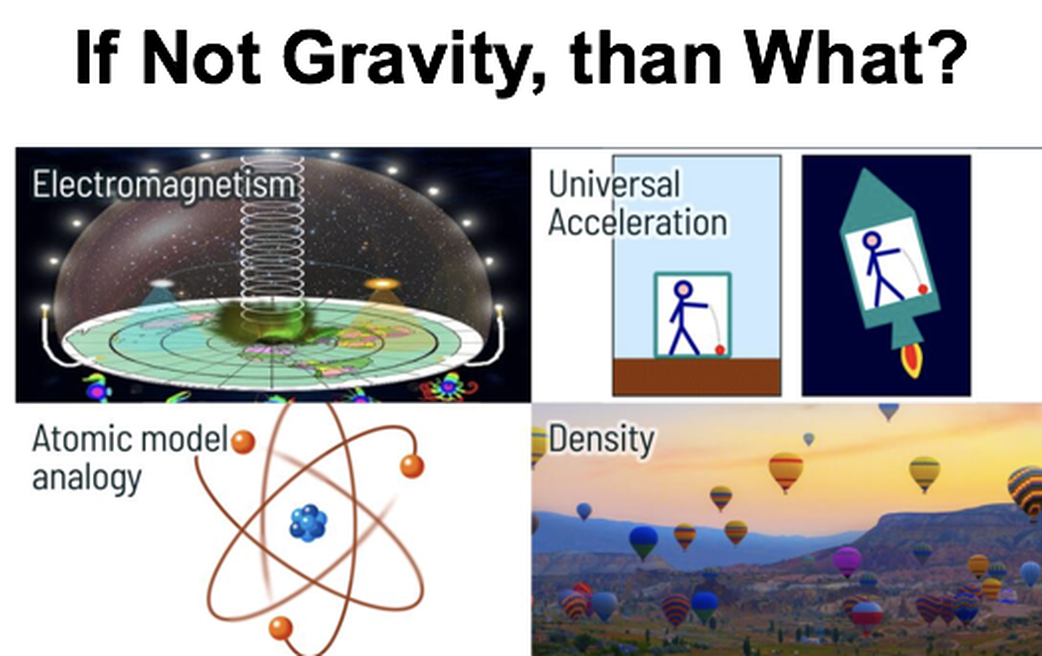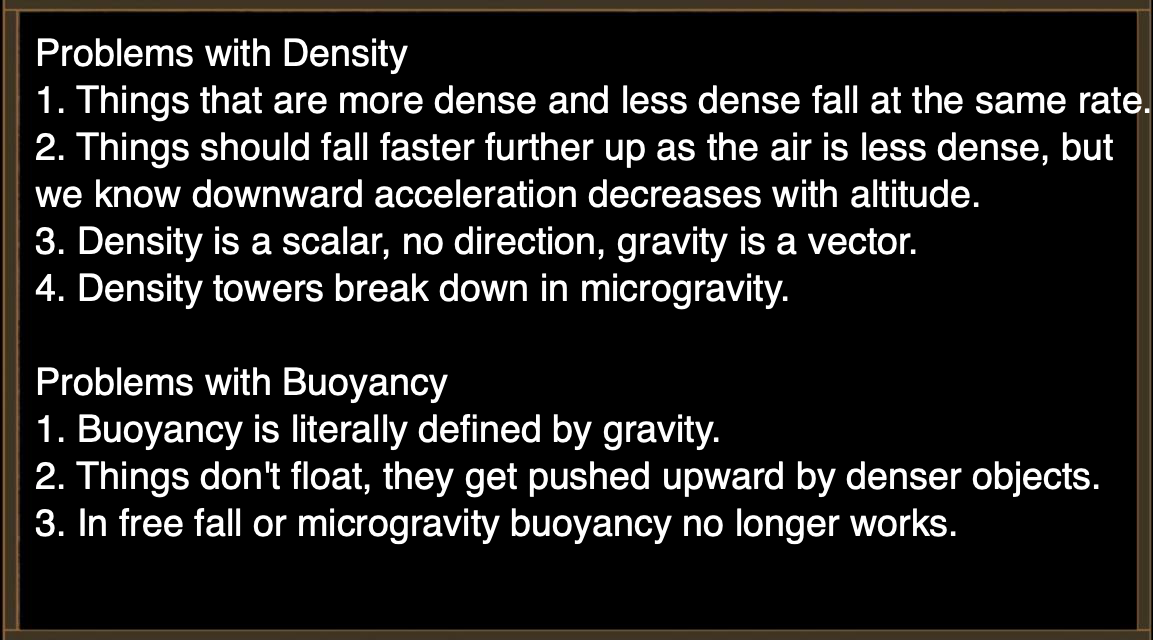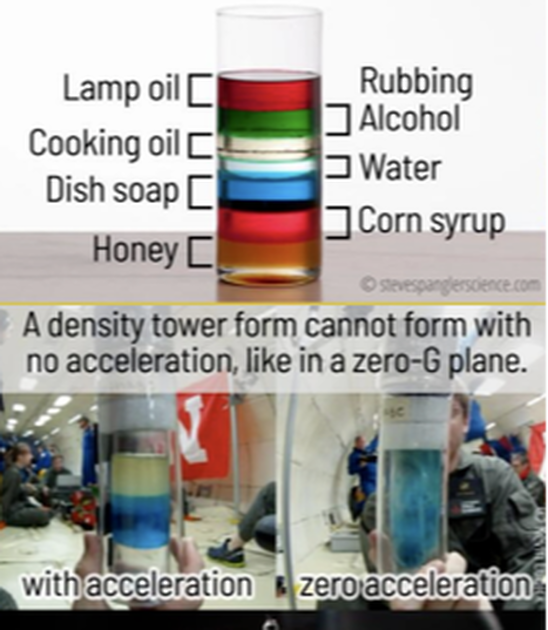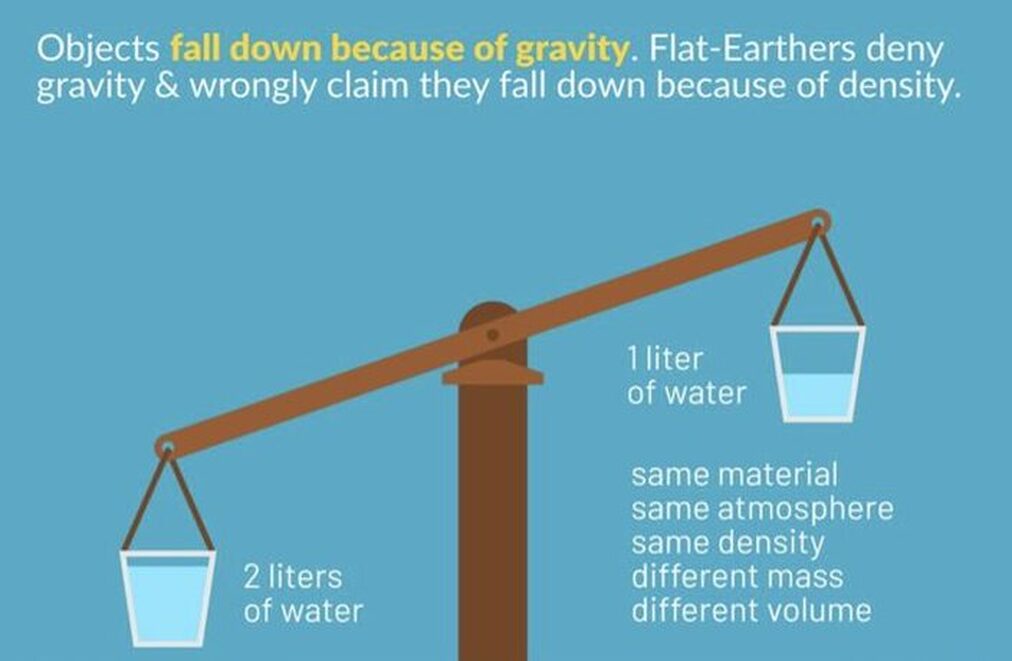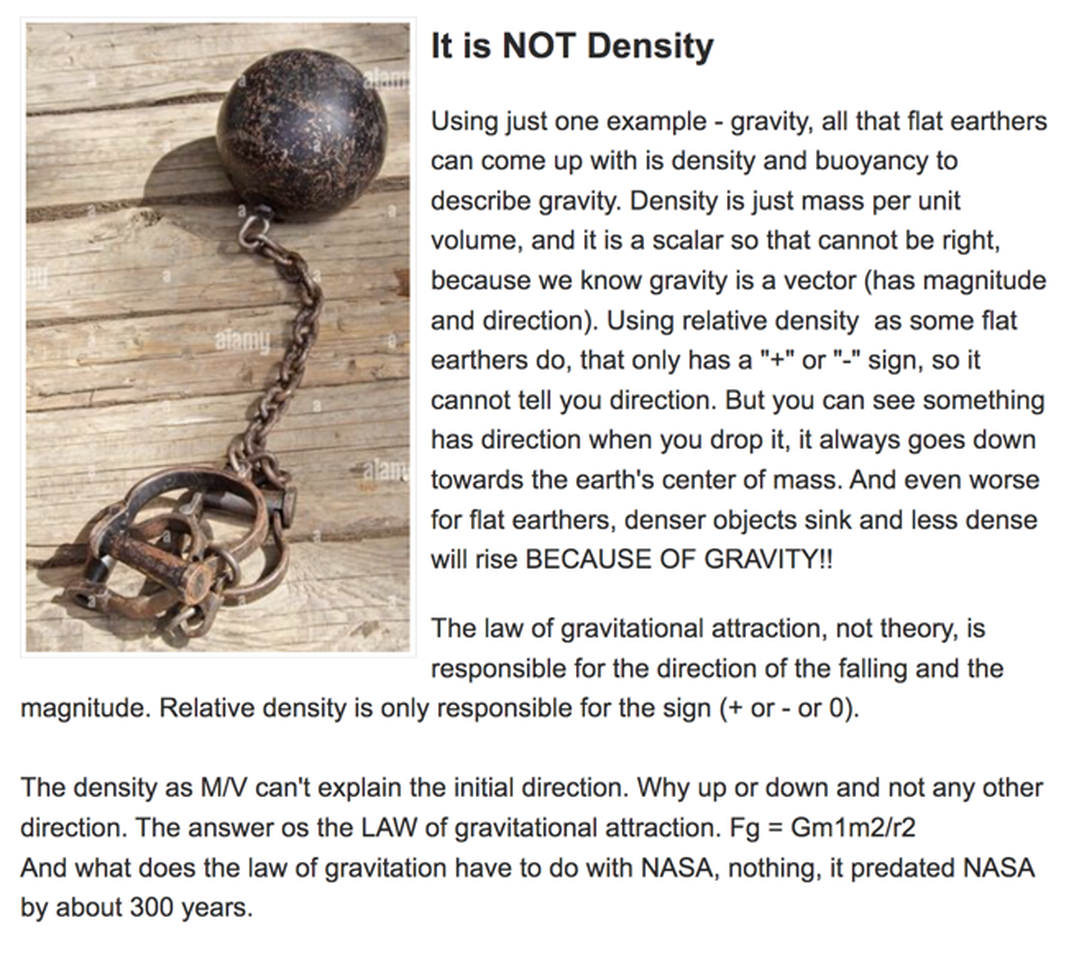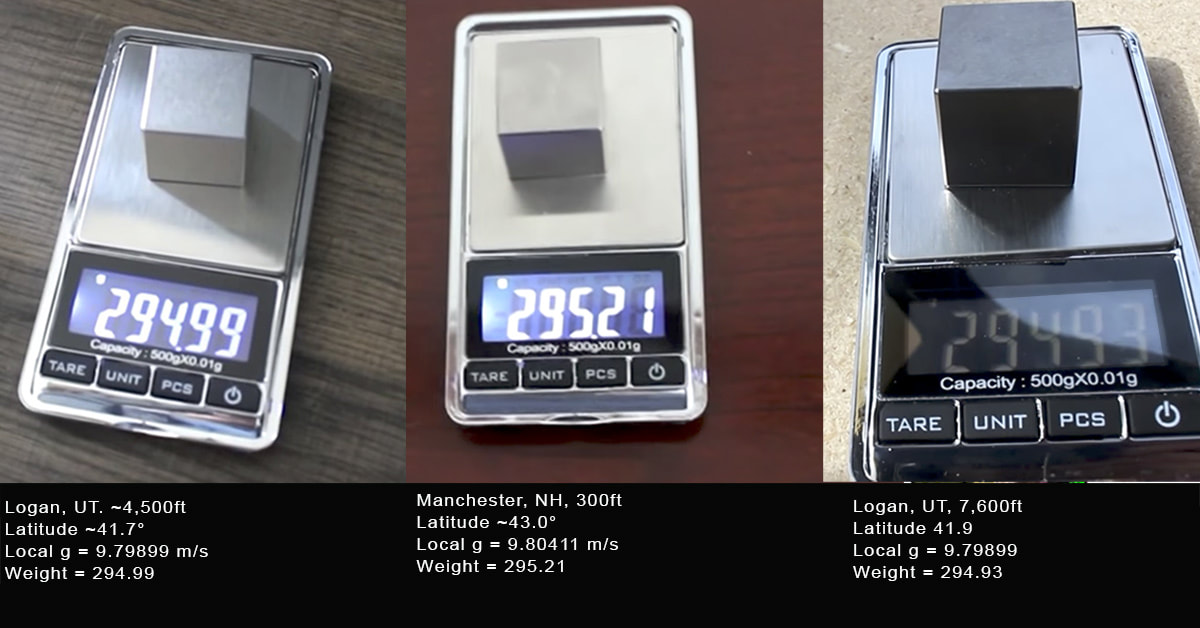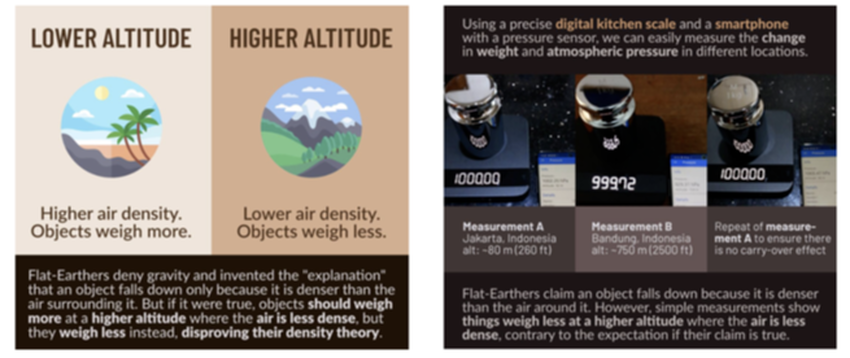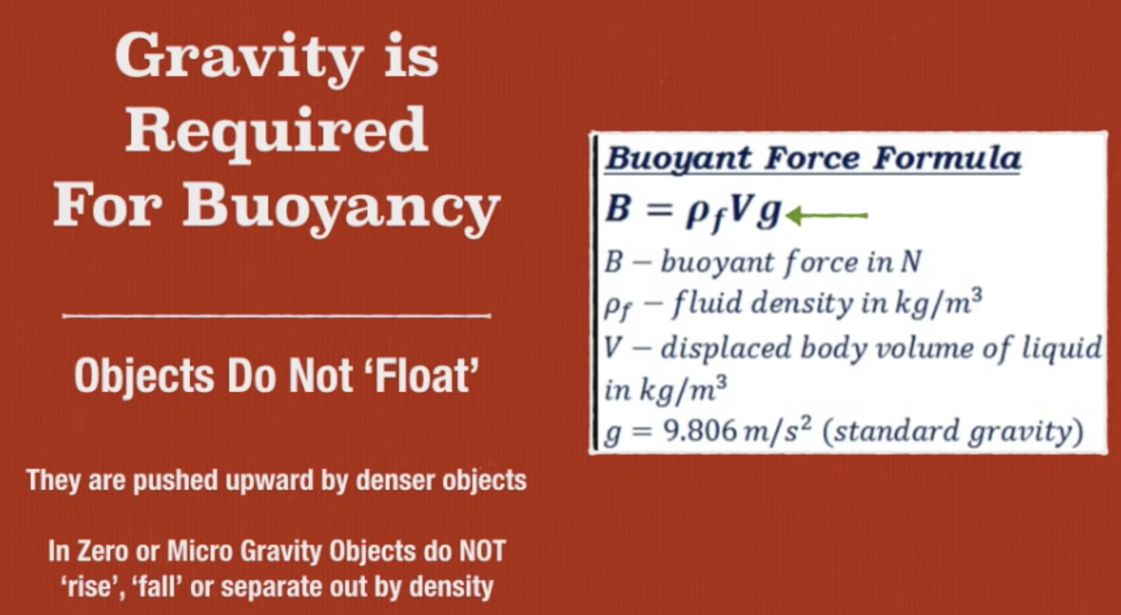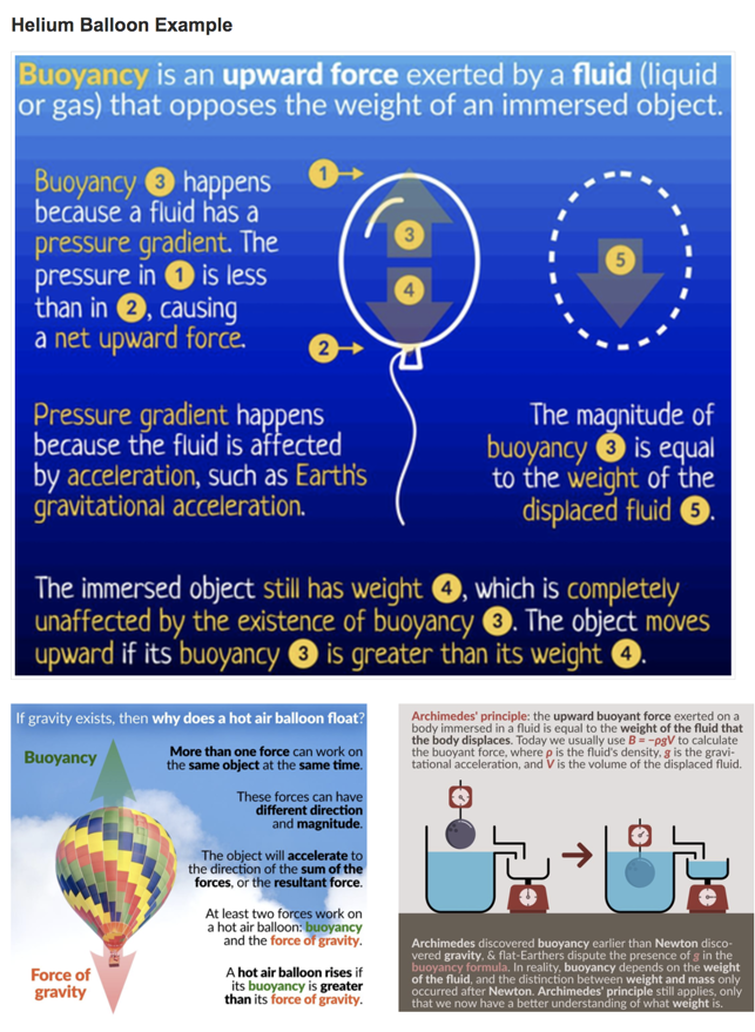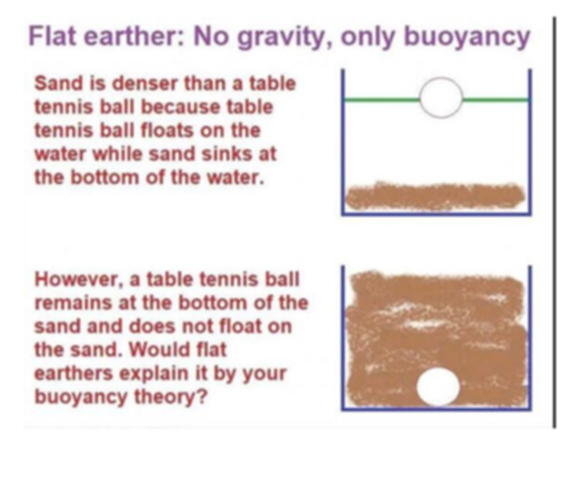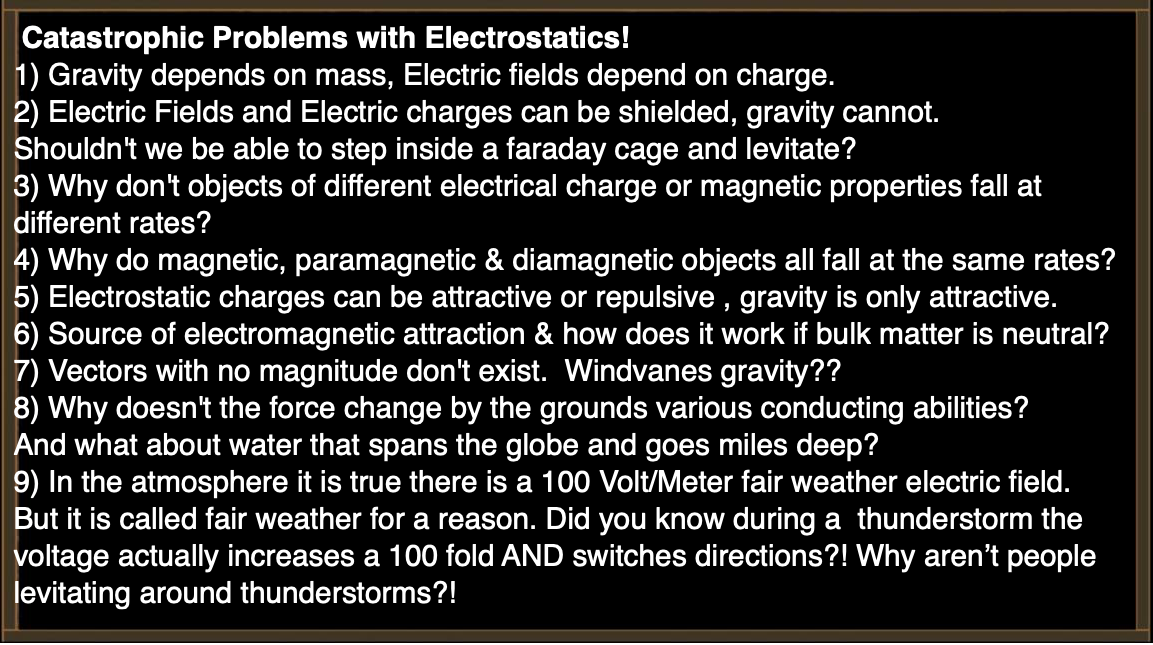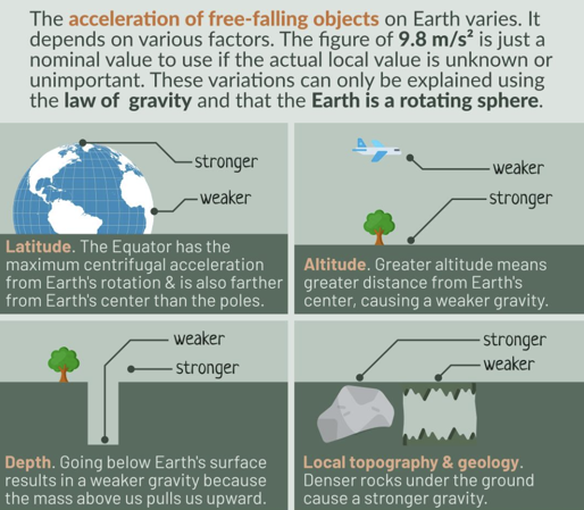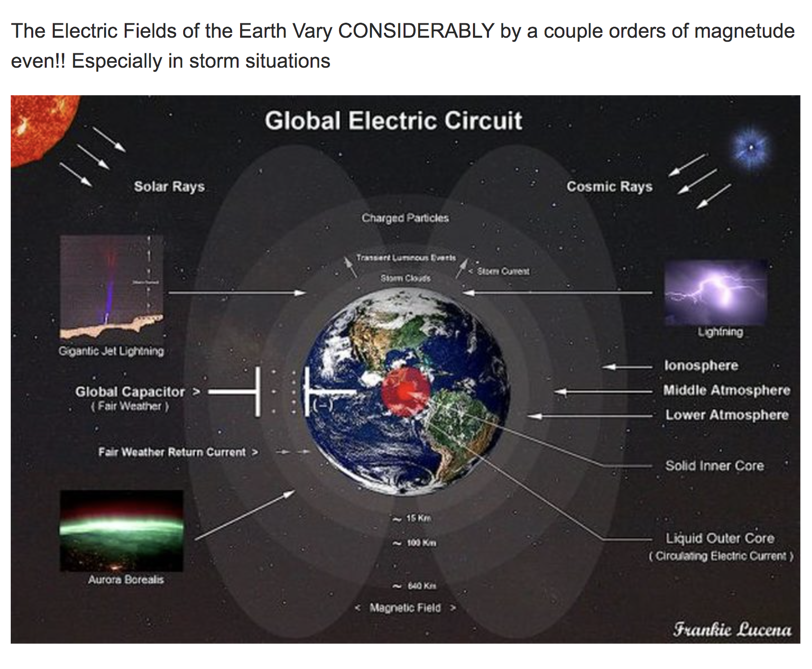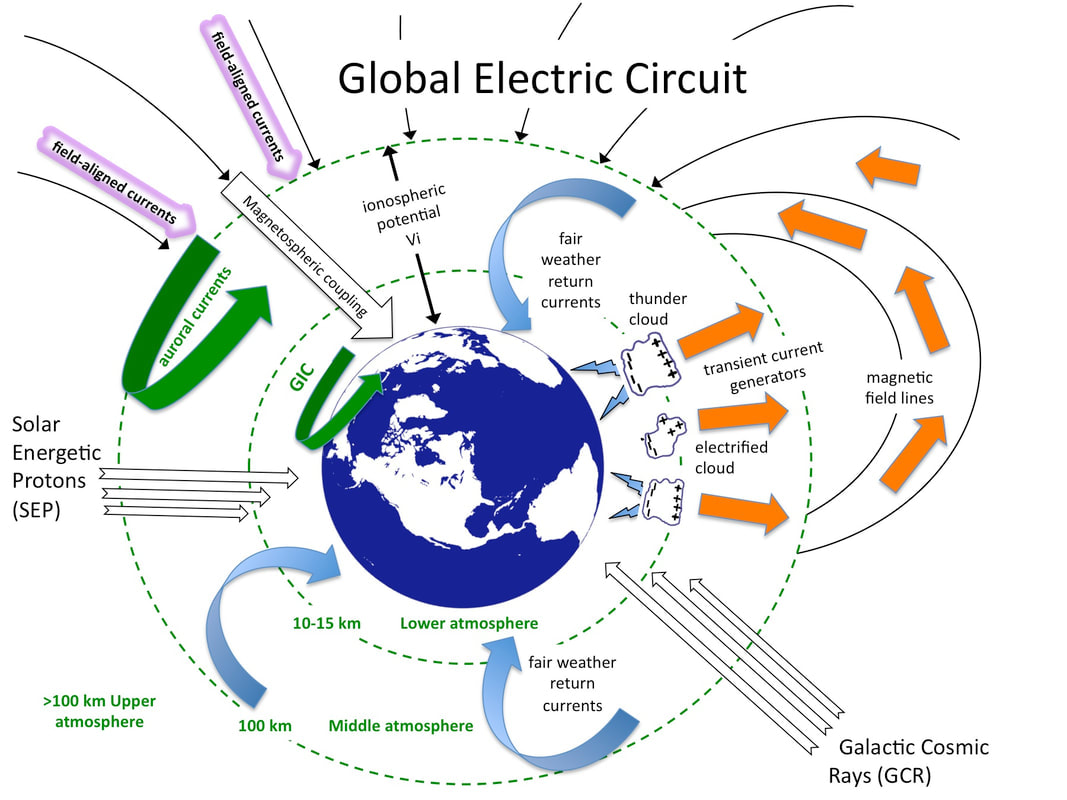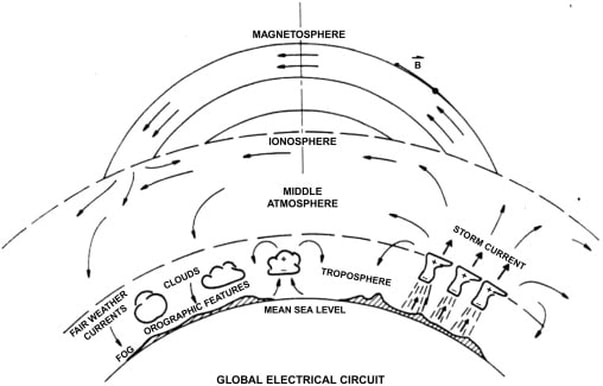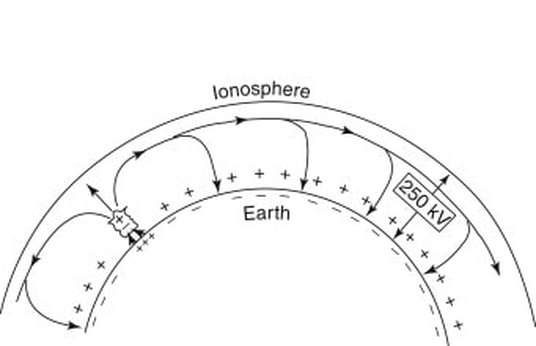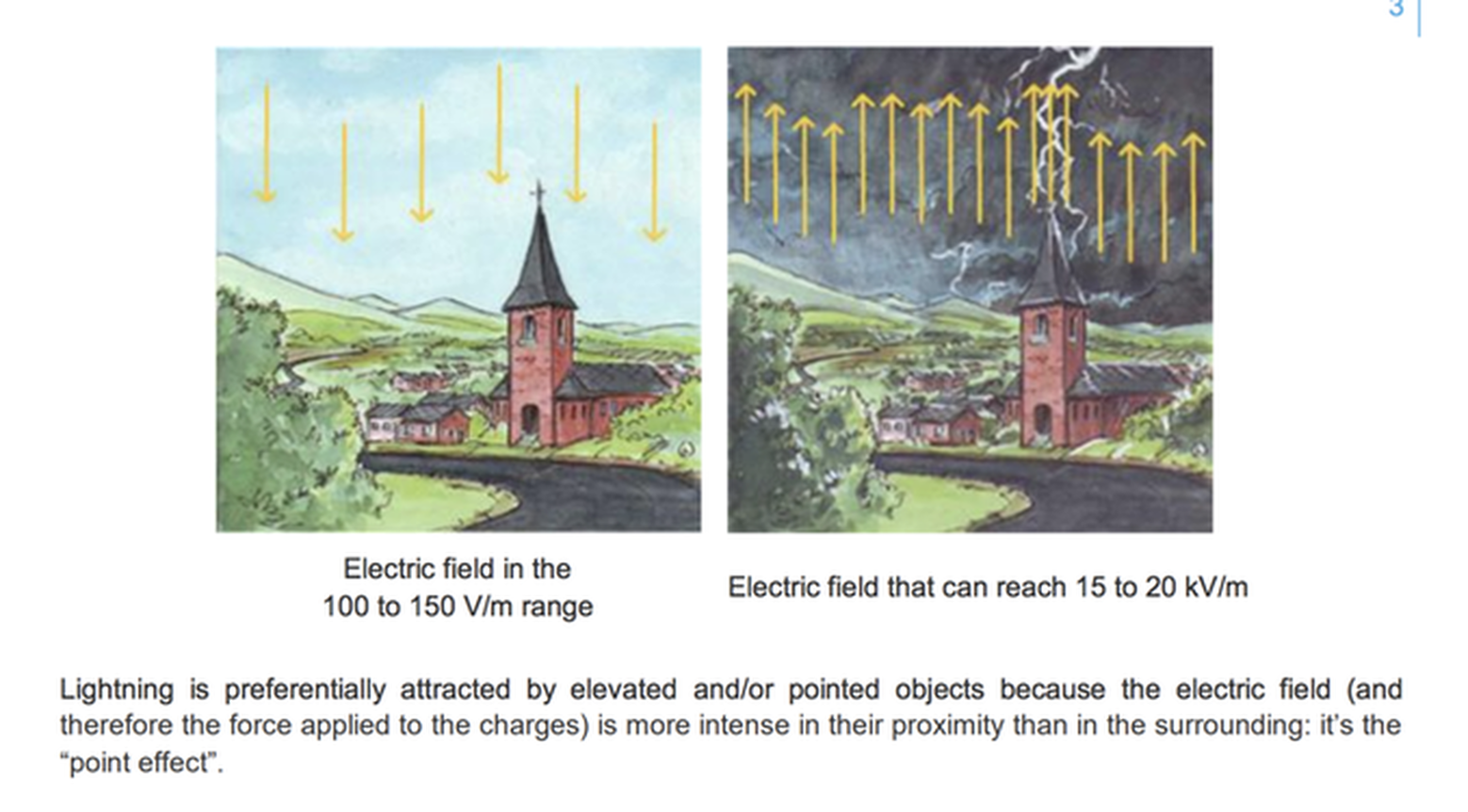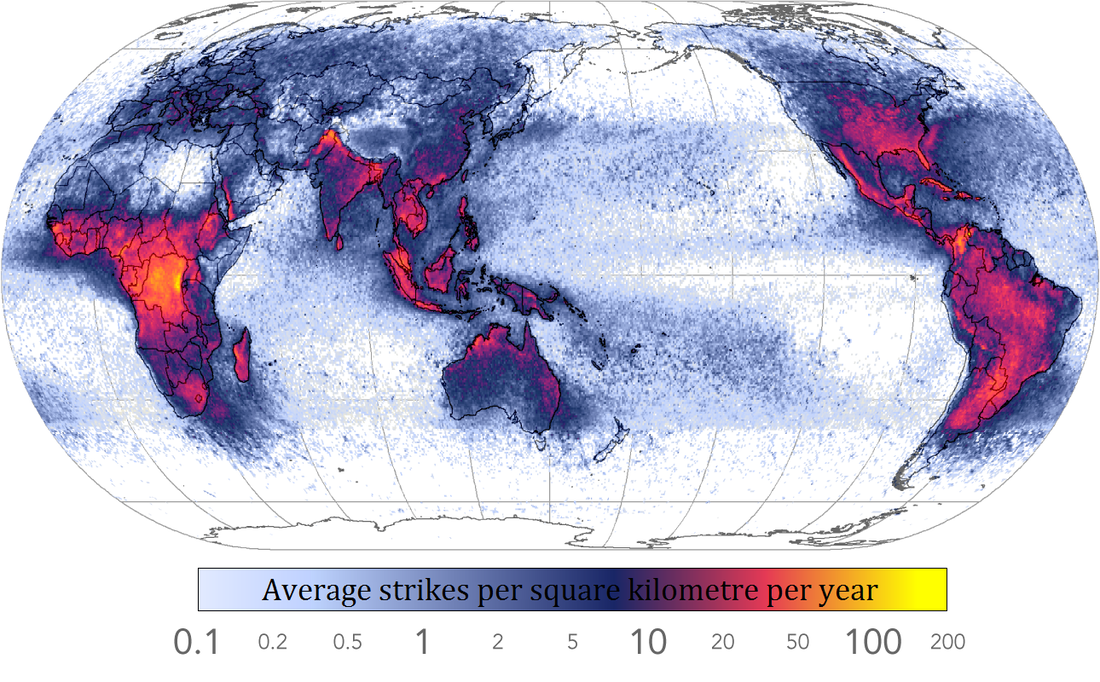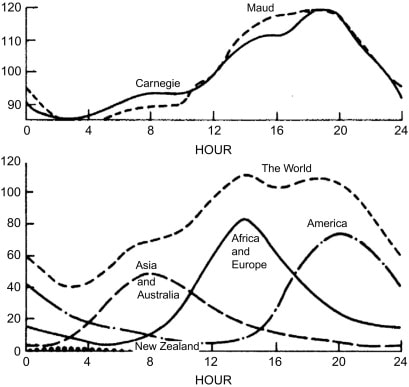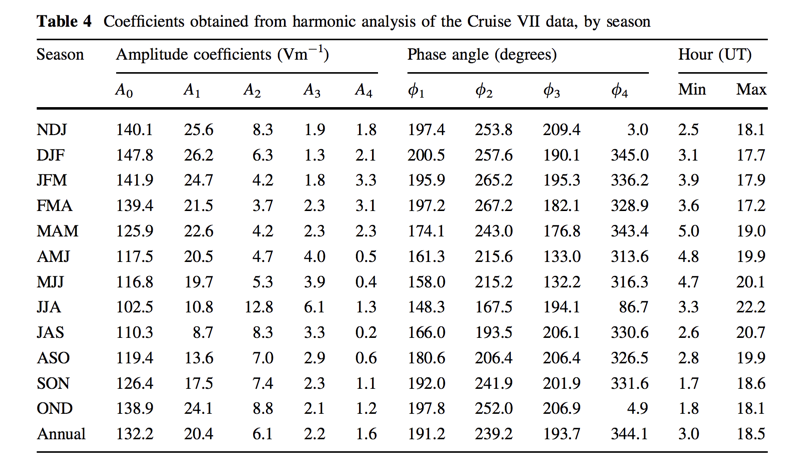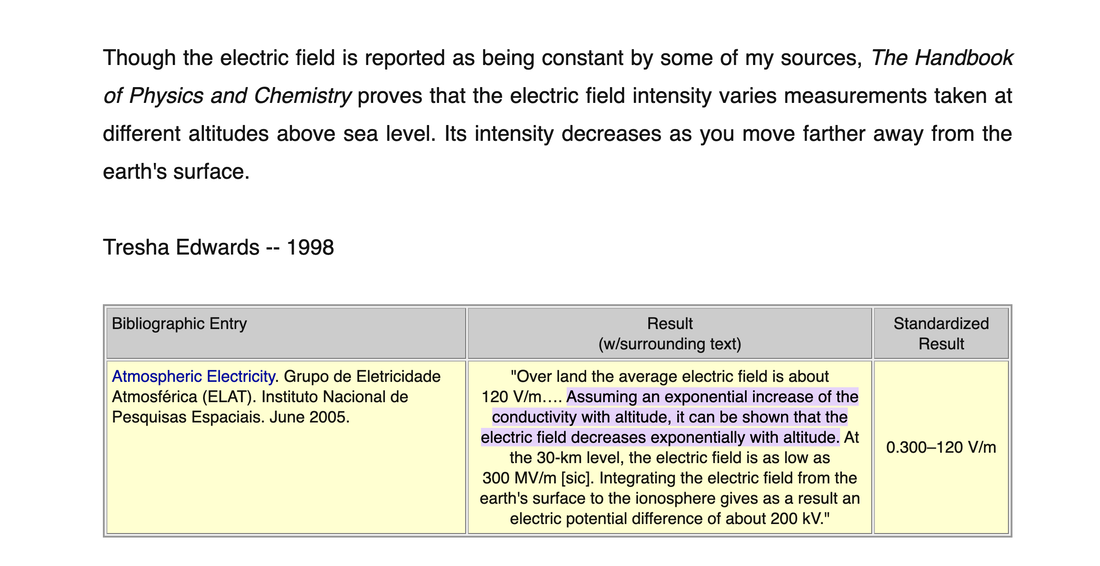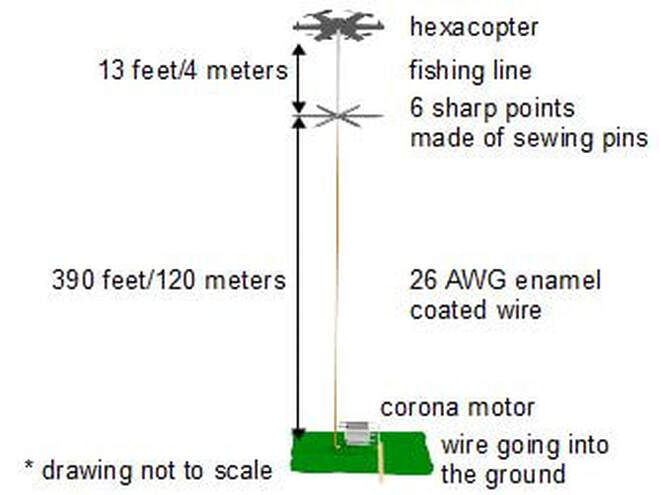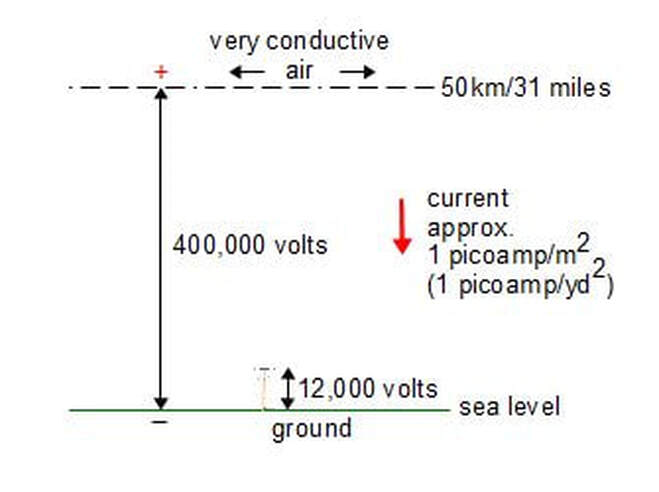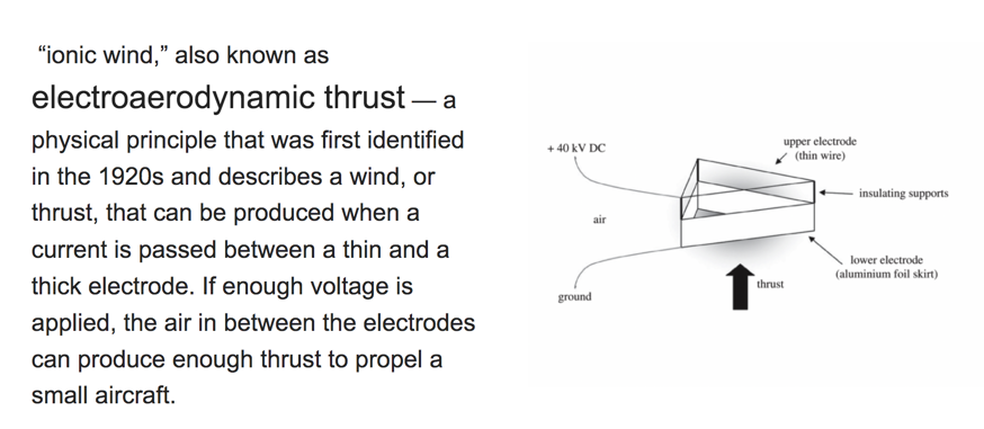Problems Flat Earth Explanations of Gravity
1) It attempts to invalidate a model that has been corroborated far beyond a reasonable doubt.
2) Flat earth model does not offer a working model to replace the one it claims is invalid.
Where is the flat earth model regarding the motion of terrestrial objects?
Where is the derivation of the indisputable value of 9.8 m/s^2 for downward acceleration?
1) It attempts to invalidate a model that has been corroborated far beyond a reasonable doubt.
2) Flat earth model does not offer a working model to replace the one it claims is invalid.
Where is the flat earth model regarding the motion of terrestrial objects?
Where is the derivation of the indisputable value of 9.8 m/s^2 for downward acceleration?
A Proof Surrogate Logical Fallacy is a phrase used in place of evidence
A proof surrogate offers no real support, but just claims that support exists.
Examples are using “studies show” without saying what those studies are and where they can be found.
Another proof surrogate is just to say that “It's obvious that….” Doing so implies that proof is simply not needed.
A proof surrogate offers no real support, but just claims that support exists.
Examples are using “studies show” without saying what those studies are and where they can be found.
Another proof surrogate is just to say that “It's obvious that….” Doing so implies that proof is simply not needed.
Gravity gives direction to density and buoyancy!!
My question to flat earthers is this: What are you reading on a scale if it is not your weight? And if you agree it is your weight, then you are agreeing to gravity, because that is literally the force of gravity acting on your mass. It is not density as show here, it is not buoyancy because you're not floating up. It is not electric force because you are electrically neutral.
So what is your weight flat earthers??
Water bubbles don't rise in space.
My question to flat earthers is this: What are you reading on a scale if it is not your weight? And if you agree it is your weight, then you are agreeing to gravity, because that is literally the force of gravity acting on your mass. It is not density as show here, it is not buoyancy because you're not floating up. It is not electric force because you are electrically neutral.
So what is your weight flat earthers??
Water bubbles don't rise in space.
Why do things weigh less at high altitude if the air is less dense??
The fact that weight decreases as you get higher is a bit a problem for the rather odd "density" theory of gravity. Air gets measurably less dense as you go higher. So if relative density is what makes things fall down then they would weigh more as they moved into less dense air. However they weigh less. They weight less because "density" has nothing to do with.
"Relative Density Disequilibrium" makes our weight change when the air pressure changes along with the weather?
The fact that weight decreases as you get higher is a bit a problem for the rather odd "density" theory of gravity. Air gets measurably less dense as you go higher. So if relative density is what makes things fall down then they would weigh more as they moved into less dense air. However they weigh less. They weight less because "density" has nothing to do with.
"Relative Density Disequilibrium" makes our weight change when the air pressure changes along with the weather?
It is Not Buoyancy
Buoyancy is an upward force exerted by a fluid (liquid or gas) that opposes the weight of an immersed object. Buoyancy happens because the fluid has a pressure gradient. Pressure gradient occurs because the fluid is affected by acceleration, such as the Earth’s gravitational acceleration.
Without Earth’s gravitational acceleration, buoyancy will not occur.
An immersed object displace the fluid by an equal volume. The magnitude of buoyancy is equal to the weight of the displaced fluid. By extension, we can also say buoyancy is the force of gravity of the surrounding fluid trying to displace the immersed object upwards.
The immersed object still retains its weight, which is entirely unaffected by the presence of buoyancy. A submerged object feel lighter not because its weight diminishes, but because there’s now an upward force we call buoyancy. The object is accelerated upward if its buoyancy is greater than its weight.
An immersed object with lower density than the fluid around it will rise upward because it will generate a greater buoyancy than its weight. However, we cannot say density alone causes it. Without the presence of an acceleration —like Earth’s gravitational acceleration—, buoyancy will not occur. Without factoring in the acceleration, we can only know if it rises or sinks, but cannot determine how fast it will rise or sink. Moreover, if a force other than weight & buoyancy is present, we cannot predict how the object will behave without factoring in the acceleration
Buoyancy is an upward force exerted by a fluid (liquid or gas) that opposes the weight of an immersed object. Buoyancy happens because the fluid has a pressure gradient. Pressure gradient occurs because the fluid is affected by acceleration, such as the Earth’s gravitational acceleration.
Without Earth’s gravitational acceleration, buoyancy will not occur.
An immersed object displace the fluid by an equal volume. The magnitude of buoyancy is equal to the weight of the displaced fluid. By extension, we can also say buoyancy is the force of gravity of the surrounding fluid trying to displace the immersed object upwards.
The immersed object still retains its weight, which is entirely unaffected by the presence of buoyancy. A submerged object feel lighter not because its weight diminishes, but because there’s now an upward force we call buoyancy. The object is accelerated upward if its buoyancy is greater than its weight.
An immersed object with lower density than the fluid around it will rise upward because it will generate a greater buoyancy than its weight. However, we cannot say density alone causes it. Without the presence of an acceleration —like Earth’s gravitational acceleration—, buoyancy will not occur. Without factoring in the acceleration, we can only know if it rises or sinks, but cannot determine how fast it will rise or sink. Moreover, if a force other than weight & buoyancy is present, we cannot predict how the object will behave without factoring in the acceleration
Light objects don't float!
Heavy objects sink below the lighter objects and force them upward.
In the case of a helium balloon, the dense air surrounding the balloon is pulled down more strongly by gravity and displaces the helium upward.
In the absence of gravity do we also not know which is up or down, but we no longer see the effects of buoyancy!
We know when we drop an object and it is in free fall, it is in a zero gravity condition.
Heavy objects sink below the lighter objects and force them upward.
In the case of a helium balloon, the dense air surrounding the balloon is pulled down more strongly by gravity and displaces the helium upward.
In the absence of gravity do we also not know which is up or down, but we no longer see the effects of buoyancy!
We know when we drop an object and it is in free fall, it is in a zero gravity condition.

Density and Bouyancy BOTH Depend on Gravity!
Imagine that you have a jar of water with a ping pong ball floating on the water. And you allow the Jar to free fall. What happens to the ball? If DENSITY alone explained the buoyant force then it should still float, but it doesn't - the buoyant force drops to zero because we have taken away the acceleration so 'g' becomes zero and p×V×0 = 0.
Imagine that you have a jar of water with a ping pong ball floating on the water. And you allow the Jar to free fall. What happens to the ball? If DENSITY alone explained the buoyant force then it should still float, but it doesn't - the buoyant force drops to zero because we have taken away the acceleration so 'g' becomes zero and p×V×0 = 0.
Water bottle drop showing how density and bouyancy depend on Gravity. In free fall, you are moving with the accelerating frame and essentially experiencing
See at the bottom of the bottle, that water bubbles just
Stop and completely stand still.
Also bubbles squished because pressure on bottom is different
Then the pressure on top.
But when you drop it there is equal pressure on all sides of the bubbles,
So its almost round.
See at the bottom of the bottle, that water bubbles just
Stop and completely stand still.
Also bubbles squished because pressure on bottom is different
Then the pressure on top.
But when you drop it there is equal pressure on all sides of the bubbles,
So its almost round.
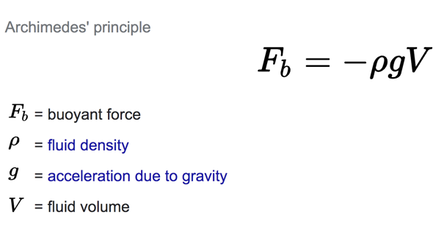
Buoyancy is an upward force (see attached) that measures how much something floats and ironically the formula for Buoyancy INCLUDES GRAVITY (g in the equation)! You see how absurd? So basically they are
---
Helium Balloon. It is less dense than the air it is in. The air around it has more mass meaning its pulled down more than the helium balloon creating a pressure on the bottom and pushing it up. That can only happen because of gravity.
Helium balloon goes backwards in a car because the air is heavier and it is being pushed forward more than the helium balloon.
---
Is a Hot Air Balloon antigravity?
No , buoyancy is a thing.
Do you know how to calculate a Buoyant Force?
Equation
Hot air balloon, helium, is less dense than the air around it which means there is less gravitational force acting on the balloon than there is on the air outside the balloon.
It pulls down the air outside the balloon more than it pulls down the balloon. That creates a force in the opposite direction to gravity.
The reason the hot air balloon floats is because of gravity.
Beach Ball
If you try to submerge a 24-inch beach ball in a pool you can feel just how tremendous that force can be, it would have a volume of about 31 1/3 gallons or 261.5 pounds [1163.2 N] of water displaced.
Experiment
Cut a small hole in the bottom of a bucket
Feed a string through, tie it to a small ball
Fill bucket with BBs
Pull string really hard
Observe that the BBs rise as the ball burrows down, displacing the BBs
Pulling the string applied greater FORCE to the Ball than the BBs
Note:
In a medium where the molecules are (fairly) free to move around, like water or the air (usually called a 'fluid'), everything is competing for that space at the bottom. This gives rise (pun!) to Archimedes' Principle which says that there is a force counter to the acceleration of gravity on a submerged object that is equal to the weight of the fluid displaced by the object.
---
Helium Balloon. It is less dense than the air it is in. The air around it has more mass meaning its pulled down more than the helium balloon creating a pressure on the bottom and pushing it up. That can only happen because of gravity.
Helium balloon goes backwards in a car because the air is heavier and it is being pushed forward more than the helium balloon.
---
Is a Hot Air Balloon antigravity?
No , buoyancy is a thing.
Do you know how to calculate a Buoyant Force?
Equation
Hot air balloon, helium, is less dense than the air around it which means there is less gravitational force acting on the balloon than there is on the air outside the balloon.
It pulls down the air outside the balloon more than it pulls down the balloon. That creates a force in the opposite direction to gravity.
The reason the hot air balloon floats is because of gravity.
Beach Ball
If you try to submerge a 24-inch beach ball in a pool you can feel just how tremendous that force can be, it would have a volume of about 31 1/3 gallons or 261.5 pounds [1163.2 N] of water displaced.
Experiment
Cut a small hole in the bottom of a bucket
Feed a string through, tie it to a small ball
Fill bucket with BBs
Pull string really hard
Observe that the BBs rise as the ball burrows down, displacing the BBs
Pulling the string applied greater FORCE to the Ball than the BBs
Note:
In a medium where the molecules are (fairly) free to move around, like water or the air (usually called a 'fluid'), everything is competing for that space at the bottom. This gives rise (pun!) to Archimedes' Principle which says that there is a force counter to the acceleration of gravity on a submerged object that is equal to the weight of the fluid displaced by the object.
It is NOT Electromagnetism (Things don't fall 9.8 m/s^2)
Some flat earth 'sects' try to use electromagnetism to describe the downward acceleration claiming that because it is 10^36 stronger than gravity. Well by that logic everything should be the nuclear force than because IT is 100x stronger than the electromagnetic force.
Furthermore we understand electromagnetism as much as we understand gravity.
You cannot deny Electrodynamics! Hopefully we are in agreement there.
Electricity and magnetism is all around us... We have electric lights and many electric appliances, We have radio, stereos, speakers and CD players. We have cell phones, ipads, laptop and desktop computers. We have Wifi, Bluetooth, Smart TVs and Smart Meters all driven by electric power lines.
Cars, planes, trains run only because of electricity. Horses need electricity because muscle contractions require electricity.
You nerve system is driven by electricity. Atoms, molecule, all chemical reactions exist because of electricity. You could not see without electricity. Your heart could not beat without electricity.
How is it we understand gravity so well, and electromagnetism so well that we don't understand them well enough to know one is the other?
Some flat earth 'sects' try to use electromagnetism to describe the downward acceleration claiming that because it is 10^36 stronger than gravity. Well by that logic everything should be the nuclear force than because IT is 100x stronger than the electromagnetic force.
Furthermore we understand electromagnetism as much as we understand gravity.
You cannot deny Electrodynamics! Hopefully we are in agreement there.
Electricity and magnetism is all around us... We have electric lights and many electric appliances, We have radio, stereos, speakers and CD players. We have cell phones, ipads, laptop and desktop computers. We have Wifi, Bluetooth, Smart TVs and Smart Meters all driven by electric power lines.
Cars, planes, trains run only because of electricity. Horses need electricity because muscle contractions require electricity.
You nerve system is driven by electricity. Atoms, molecule, all chemical reactions exist because of electricity. You could not see without electricity. Your heart could not beat without electricity.
How is it we understand gravity so well, and electromagnetism so well that we don't understand them well enough to know one is the other?
8*) You mention the positive charge in the atmosphere which is true there is a 100 Volt/Meter fair weather electric field. But it is called fair weather for a reason. Did you know during a thunderstorm we KNOW the electric field almost always reverses polarity so the electric field changes from positive to negative, and that would mean in your model things would start levitating around thunderstorms and lightning...
9) I have seen David W and Globebusters add charge to objects and you CAN see them come to the ground, but it would also attract to the wall and ceiling even (rub a balloon on your sweater and you can see it stick to a wall). Why is that?... Well it turns out when you add charge to an object, it will be attracted weakly to any neutral object like the wall, floor, etc due to van der Waals or London forces. This happens because the net charge on say the balloon will induce a charge on a neutral object by "pulling" the opposite charge to the surface and in doing so you create a force where the balloon appears to stick to the wall. This is how electrostatic air purifiers work too.
Unfortunately for flat earthers this will allow objects to be attracted up, down and sideways and we KNOW gravity is only down so how can it be electrostatic (of course gravity could be sideways if you had huge amount of mass. But even a mountain deflects a plumbob only a couple centimeters. They went on that the electrostatic force is so much stronger, not realizing that also debunks their model allowing things to be attracted up down and sideways. Because gravity is so weak and the earth is so massive, things always fall down towards the center.
Applying just a little bit of scrutiny we see it is not electromagnetism but exclusively gravity
As has been understood for a couple centuries now.
9) I have seen David W and Globebusters add charge to objects and you CAN see them come to the ground, but it would also attract to the wall and ceiling even (rub a balloon on your sweater and you can see it stick to a wall). Why is that?... Well it turns out when you add charge to an object, it will be attracted weakly to any neutral object like the wall, floor, etc due to van der Waals or London forces. This happens because the net charge on say the balloon will induce a charge on a neutral object by "pulling" the opposite charge to the surface and in doing so you create a force where the balloon appears to stick to the wall. This is how electrostatic air purifiers work too.
Unfortunately for flat earthers this will allow objects to be attracted up, down and sideways and we KNOW gravity is only down so how can it be electrostatic (of course gravity could be sideways if you had huge amount of mass. But even a mountain deflects a plumbob only a couple centimeters. They went on that the electrostatic force is so much stronger, not realizing that also debunks their model allowing things to be attracted up down and sideways. Because gravity is so weak and the earth is so massive, things always fall down towards the center.
Applying just a little bit of scrutiny we see it is not electromagnetism but exclusively gravity
As has been understood for a couple centuries now.
Gravity is Very Uniform (only changes a little)
Something to Keep in mind when Comparing Gravity to Electric Universe Model
In fact, here is a map of the Earth’s gravitational acceleration, as observed by the GRACE spacecraft:The units are 0.00001 m/s2
The earth's gravitational field is INCREDIBLY UNIFORM, almost exactly 9.8 m/s^2 everywhere on earth's surface near sea level..
The acceleration g varies by about 1/2 of 1 percent with position on Earth's surface, from about 9.78 metres per second per second at the Equator to approximately 9.83 metres per second per second at the poles.
Something to Keep in mind when Comparing Gravity to Electric Universe Model
In fact, here is a map of the Earth’s gravitational acceleration, as observed by the GRACE spacecraft:The units are 0.00001 m/s2
The earth's gravitational field is INCREDIBLY UNIFORM, almost exactly 9.8 m/s^2 everywhere on earth's surface near sea level..
The acceleration g varies by about 1/2 of 1 percent with position on Earth's surface, from about 9.78 metres per second per second at the Equator to approximately 9.83 metres per second per second at the poles.
Centrifugal Force and Why things Weigh Less At the Equator vs the Poles
What about the effect of the spinning Earth? Near the equator, the acceleration is 0.0339 meter/sec2. Accelerometers do measure this force. But compared to gravity, it is small. Only 1/300 as large as gravity. Only scientific accelerometers are going to notice this. And they do notice it.
As Earth rotates, any object on its surface will feel a centrifugal force directed outward from the center of Earth and generally in the direction of local zenith. This causes Earth to be slightly bulged-out at the equator compared to the poles, which you can see from the difference between its equatorial radius of 6,378.14 km versus its polar radius of 6,356.75 km: a polar flattening difference of 21.4 kilometers. This centrifugal force also has an effect upon the local surface acceleration by reducing it slightly at the equator compared to the poles. At the equator, one would measure a value for ‘g’ that is about 9.78 m/sec2 while at the poles it is about 9.83 m/sec2
Gravity on the Earth's surface varies by around 0.7%, from 9.7639 m/s2 on the Nevado Huascarán mountain in Peru to 9.8337 m/s2 on the surface of the arctic ocean. I may modify due to rounding and say 9.76 - 9.83 m/s^2, but that is STILL a small variance across the entirety of the earth!
https://en.wikipedia.org/wiki/Gravity_of_Earth#:~:text=There%20are%20consequently%20slight%20deviations,surface%20of%20the%20Arctic%20Ocean
What about the effect of the spinning Earth? Near the equator, the acceleration is 0.0339 meter/sec2. Accelerometers do measure this force. But compared to gravity, it is small. Only 1/300 as large as gravity. Only scientific accelerometers are going to notice this. And they do notice it.
As Earth rotates, any object on its surface will feel a centrifugal force directed outward from the center of Earth and generally in the direction of local zenith. This causes Earth to be slightly bulged-out at the equator compared to the poles, which you can see from the difference between its equatorial radius of 6,378.14 km versus its polar radius of 6,356.75 km: a polar flattening difference of 21.4 kilometers. This centrifugal force also has an effect upon the local surface acceleration by reducing it slightly at the equator compared to the poles. At the equator, one would measure a value for ‘g’ that is about 9.78 m/sec2 while at the poles it is about 9.83 m/sec2
Gravity on the Earth's surface varies by around 0.7%, from 9.7639 m/s2 on the Nevado Huascarán mountain in Peru to 9.8337 m/s2 on the surface of the arctic ocean. I may modify due to rounding and say 9.76 - 9.83 m/s^2, but that is STILL a small variance across the entirety of the earth!
https://en.wikipedia.org/wiki/Gravity_of_Earth#:~:text=There%20are%20consequently%20slight%20deviations,surface%20of%20the%20Arctic%20Ocean
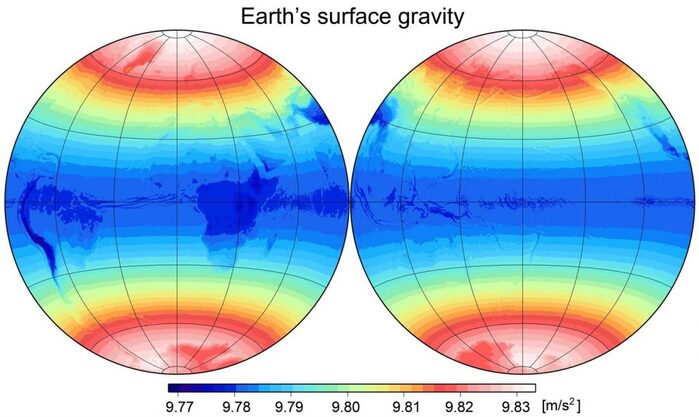
Geodesist - Gee -odd - uh - sist
Using a wide variety of tools, both on the land and in space, geodesists are experts at measuring things. Here are a few examples of what geodesists can measure.
With the precision of atomic clocks and lasers, geodesists can measure the pull of gravity so accurately, they could detect changes of one billionth of your body weight.
With tools that monitor the noise from outside our own galaxy, geodesists are able to measure the distances between two points on Earth to less than a millimeter.
By bouncing signals from satellites located hundreds of kilometers above the ocean, geodesists are able to track the rise of the mean ocean surface to about 1.7 millimeters per year.
And, probably most well-known, by using signals generated by GPS satellites that are located approximately 20,000 kilometers above the Earth, geodesists are able to accurately determine the positions of points to a few centimeters in just a matter of minutes.
Using a wide variety of tools, both on the land and in space, geodesists are experts at measuring things. Here are a few examples of what geodesists can measure.
With the precision of atomic clocks and lasers, geodesists can measure the pull of gravity so accurately, they could detect changes of one billionth of your body weight.
With tools that monitor the noise from outside our own galaxy, geodesists are able to measure the distances between two points on Earth to less than a millimeter.
By bouncing signals from satellites located hundreds of kilometers above the ocean, geodesists are able to track the rise of the mean ocean surface to about 1.7 millimeters per year.
And, probably most well-known, by using signals generated by GPS satellites that are located approximately 20,000 kilometers above the Earth, geodesists are able to accurately determine the positions of points to a few centimeters in just a matter of minutes.
Electrostatic gravitation DOESN'T WORK!!
Earth has an electrostatic charge. All objects have an electrostatic charge
Vague, so do all objects have positive charge? What creates the bias.
We can measure objects with charge. We don't observe all non earth objects repelled?
The earth and all objects have a charge? No they don't objects can be electrically neutral.
Objects are attracted to the earth because of a charge? They can be but must do a free body diagram.
Charges
1) A charge is a property of matter that objects can have.
2) Two types of charges: positive and negative
Opposite charge objects attract
Like charge repel.
Earth has an electrostatic charge. All objects have an electrostatic charge
Vague, so do all objects have positive charge? What creates the bias.
We can measure objects with charge. We don't observe all non earth objects repelled?
The earth and all objects have a charge? No they don't objects can be electrically neutral.
Objects are attracted to the earth because of a charge? They can be but must do a free body diagram.
Charges
1) A charge is a property of matter that objects can have.
2) Two types of charges: positive and negative
Opposite charge objects attract
Like charge repel.

Balloon and paper
Paper & Balloon falls - charged and being attracted to the charge of the earth.
Pieces of paper not attracted balloon
Run on wool.. Pieces of paper now attracted by balloon
Charge opposite... Opposites attract. Stronger charge than earth , but same charge.
Earth and balloon same charge... should be repelled And moved up. Balloon must have same charge. Balloon should have repulsive
Paper & Balloon falls - charged and being attracted to the charge of the earth.
Pieces of paper not attracted balloon
Run on wool.. Pieces of paper now attracted by balloon
Charge opposite... Opposites attract. Stronger charge than earth , but same charge.
Earth and balloon same charge... should be repelled And moved up. Balloon must have same charge. Balloon should have repulsive

Downward Bias? Proof?
Show me a vector with no magnitude in nature? That is show me a force or movement of ANYTHING that has direction only.
This is a what a windvane is, showing you only the direction of the wind, but the wind itself most definitely has a magnitude.
Show me a vector with no magnitude in nature? That is show me a force or movement of ANYTHING that has direction only.
This is a what a windvane is, showing you only the direction of the wind, but the wind itself most definitely has a magnitude.
Hmm, not gravity so lets say it is electrical charge related. OK thunderstorms builds up MASSIVE negative charge in the bottom of the cloud until it is so high that lightning strikes downwards. So when a thundercloud goes over we should fly up towards the cloud and get struck before we get there. OUCH! That doesn't happen so not charge.
OK lets try magnetism instead. OK, non-magnetised iron is attracted to both magnetic poles. So a simple drop test of a plastic pen and a steel knife should show the knife dropping much faster. I did that test when investigating gravity and they drop the same. So not magnetism.
OK lets try magnetism instead. OK, non-magnetised iron is attracted to both magnetic poles. So a simple drop test of a plastic pen and a steel knife should show the knife dropping much faster. I did that test when investigating gravity and they drop the same. So not magnetism.
"The conductivity of the air due to the drifting of ions also increases rapidly with altitude—for two reasons. First of all, the ionization from cosmic rays increases with altitude. Secondly, as the density of air goes down, the mean free path of the ions increases, so that they can travel farther in the electric field before they have a collision—resulting in a rapid increase of conductivity as one goes up." Richard Feynman.
Look into electromagnetic tethering MIT

